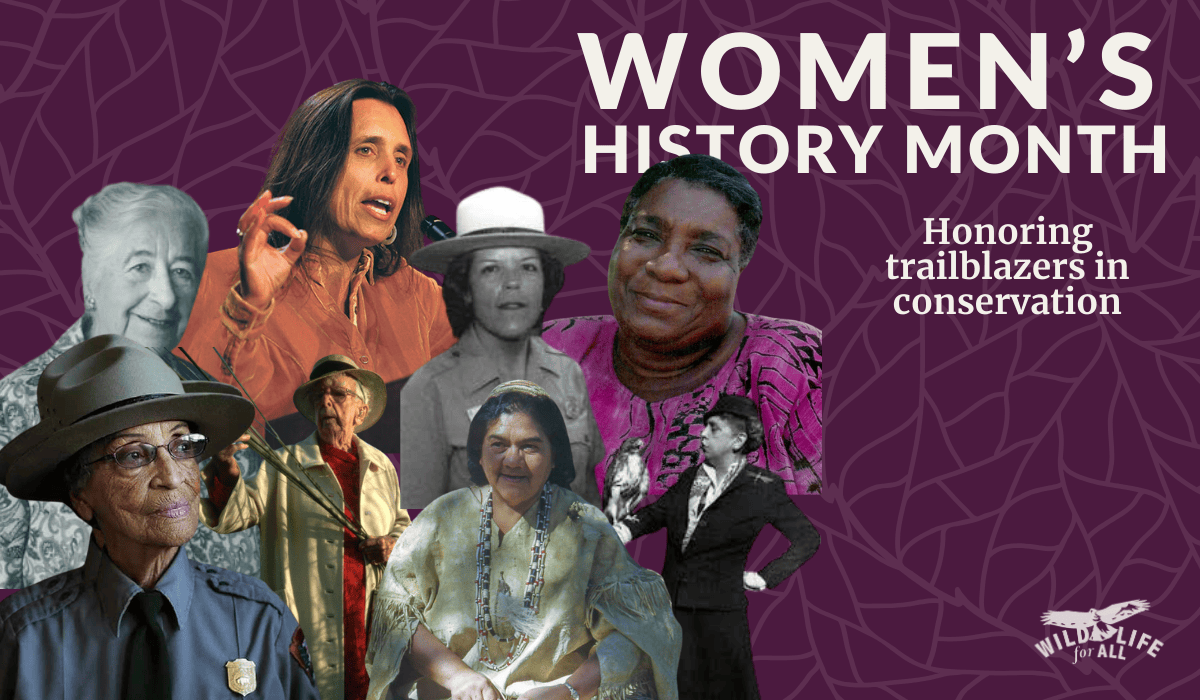Women’s History Month is every day and we should spend today honoring women in conservation.
Women’s History Month: Honoring Women in Conservation
Today is the last day of Women’s History Month, a time to celebrate the contributions of women across all fields—including conservation. Historically, the voices of women in environmental advocacy and wildlife protection have been overlooked, yet their impact has been profound.
Wildlife for All is proud to be a woman-led organization, continuing the legacy of trailblazing women who have shaped the future of conservation as we work to reform wildlife governance for the benefit of all species and ecosystems.
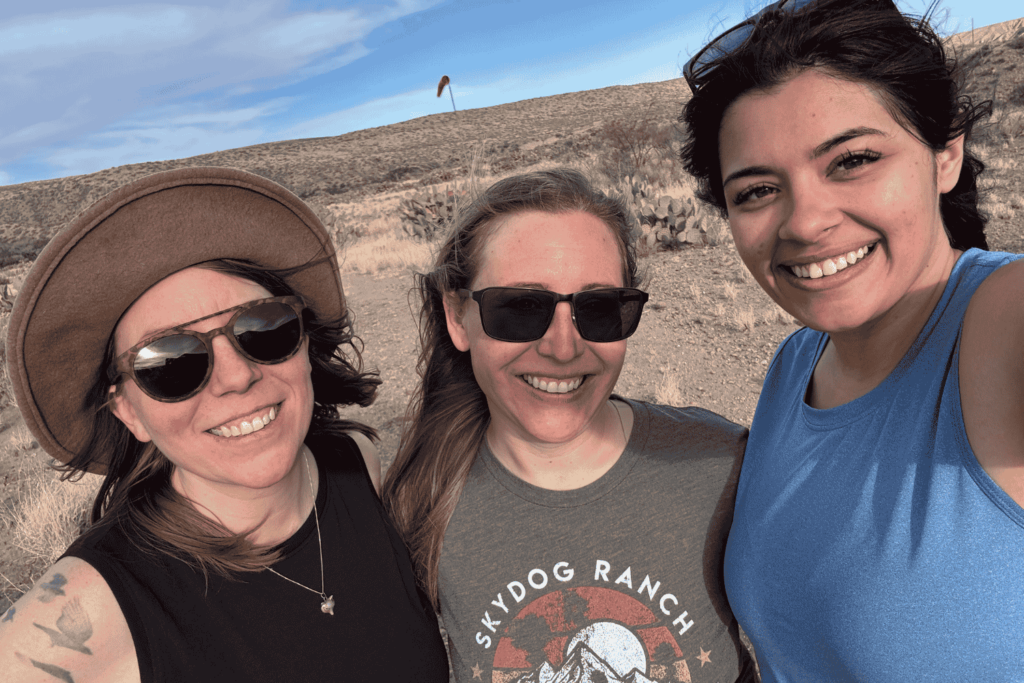
The women-led team at Wildlife for All. From left to right: Michelle Lute, Mandy Culbertson, and Delani Delgado.
The Changing Landscape of Conservation
Historically, conservation has been a male-dominated field, but that is changing. More women are entering environmental sciences, leading advocacy campaigns, and shaping policy at all levels. However, systemic barriers still exist, and the voices of women—especially Black women, women of color, and Indigenous women—continue to be underrepresented in decision-making processes.
At Wildlife for All, we believe that conservation should reflect the diversity of the world it seeks to protect. Our mission includes advocating for a more just, democratic, and science-based approach to wildlife management—one that includes all voices, not just those of traditional power holders.
As we celebrate Women’s History Month, we honor the women who paved the way for today’s conservation efforts and recognize the ongoing work needed to ensure a more equitable and effective approach to protecting wildlife. By supporting women-led initiatives and amplifying diverse voices, we can build a conservation movement that works for all species, human and nonhuman alike.
The Legacy of Women in Conservation
While well-known figures like Rachel Carson helped spark the modern environmental movement, many other women played critical roles in conservation history, often without the recognition they deserved. Some of these trailblazers include:
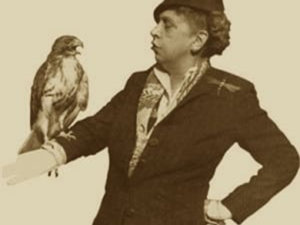
Rosalie Edge, image courtesy of the Audubon Society.
Rosalie Edge (1877–1962) – A suffragist-turned-conservationist, Edge was a fearless advocate for wildlife protection. She founded Hawk Mountain Sanctuary, the world’s first refuge for birds of prey, and was an early voice against the dangers of DDT, years before Rachel Carson’s Silent Spring was published. Edge also pushed for the creation and expansion of several national parks, leaving a lasting impact on conservation policy.
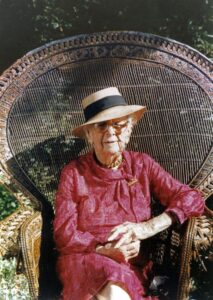
Marjory Stoneman Douglas. Image courtesy of FloridaMemory.com
Marjory Stoneman Douglas (1890–1998) – Marjory Stoneman Douglas was an American journalist, author, women’s suffrage advocate, and conservationist known for her staunch defense of the Everglades against efforts to drain it and reclaim land for development. Best known for her tireless efforts to protect the Florida Everglades, Marjory Stoneman Douglas’ book, The Everglades: River of Grass, transformed public perception of the region and helped prevent its destruction.
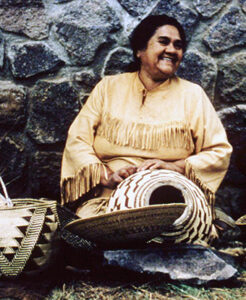
Selena LaMarr. Image courtesy of the National Park Service.
Selena LaMarr (c. 1883–1972) – A member of the Atsugewi Tribe, Selena LaMarr was part of a generation of Indigenous children forced into boarding schools, where their languages and traditions were nearly erased. But LaMarr refused to let her culture disappear. In 1952, she became a cultural guide at Lassen Volcanic National Park, where she demonstrated traditional Atsugewi practices such as basket weaving and acorn pounding. Her work not only captivated visitors but also helped preserve her people’s traditions at a time when the Atsugewi population had dwindled to just 200, with only one fluent speaker of the language. Even after her passing, her legacy lived on—her nieces continued her educational work, ensuring that Atsugewi traditions were not lost.
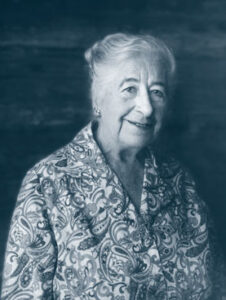
Margaret “Mardy” Murie. Image courtesy of Reed College.
Margaret Murie (1902–2003) – Margaret “Mardy” Murie was a naturalist, writer, adventurer, and conservationist. Known as the “grandmother of the conservation movement,” Margaret Murie was instrumental in the passage of the Wilderness Act and the protection of Alaska’s Arctic National Wildlife Refuge. She was the recipient of the Audubon Medal, the John Muir Award, and the Presidential Medal of Freedom.
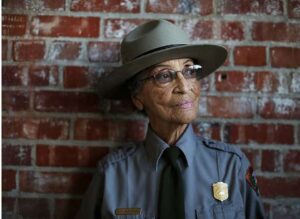
Betty Reid Soskin. Image courtesy of the National Park Service.
Betty Reid Soskin (1921–Present) – Betty Reid Soskin made history as the oldest full-time National Park Service ranger, serving until the age of 100. She began her park ranger career at 85, following a lifetime of work as a writer, singer, and civil rights activist. At Rosie the Riveter WWII Home Front National Historical Park, Soskin played a critical role in ensuring that the contributions of Black Americans and other marginalized communities were included in the park’s interpretation. Her work emphasized that national parks must reflect all of America’s history, not just the dominant narratives.
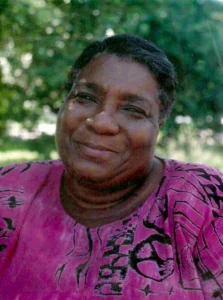
Hazel M. Johnson. Image courtesy of The Chicago Tribune.
Hazel M. Johnson (1935–2011) – The “Mother of Environmental Justice,” Hazel M. Johnson exposed the environmental racism that disproportionately harmed Black and Brown communities. In 1979, she founded People for Community Recovery, an organization dedicated to clean air, safe drinking water, and renters’ rights. Her activism laid the foundation for the modern environmental justice movement, influencing policies and sparking research on the intersection of race, identity, and environmental hazards. Johnson’s work remains a cornerstone of the fight for environmental equity.
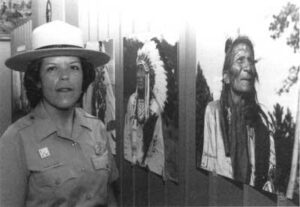
Barbara Sutteer (Booher). Image courtesy of the National Park Service.
Barbara Sutteer (formerly Booher) (b. 1941) – Barbara Sutteer was the first Indigenous woman to serve as superintendent of a national park site, the Custer Battlefield National Monument in 1990. Under her leadership, the site was renamed Little Bighorn Battlefield National Monument and a memorial was established to honor the Indigenous people who fought in the battle. Her tenure sent a strong message of inclusion, and Sutteer’s work was a turning point in how national parks represent Indigenous history.
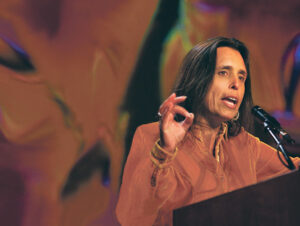
Winona LaDuke. Image courtesy of the University of Washington.
Winona LaDuke (b. 1959) – An Indigenous leader and environmentalist who has led the fight against recent pipeline projects, Winona LaDuke grew up watching her father fight for the treaty rights of his Anishinaabekwe (Ojibwe) Tribe on Minnesota’s White Earth Reservation. LaDuke studied economic development at Harvard University, and her non-profit, the White Earth Land Recovery Project, sells traditional foods under the label “Native Harvest.” She also co-founded Honor the Earth, a Native-led organization that provides grants for Indigenous environmental projects.
This list is by no means comprehensive but hopefully gathering these amazing women in one article inspires you as much it does us. Join us in celebrating Women’s History Month not just for one month but every day as we support the future of inclusive, science-driven conservation.

